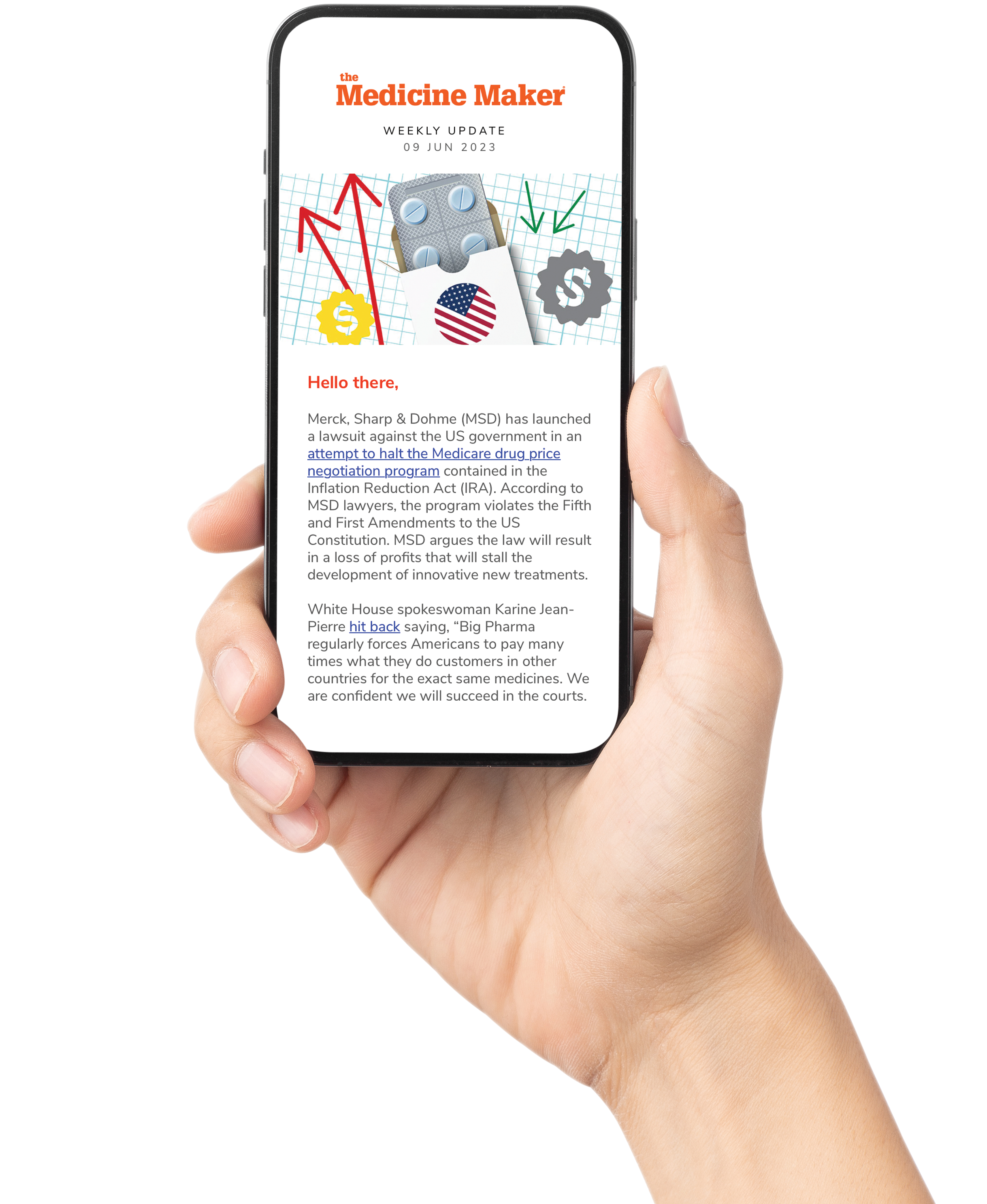BeOne Medicines, formerly BeiGene, officially redomiciled to Basel, Switzerland, launching under its new name in May 2025. The move and rebranding aimed to establish a presence in one of the world’s premier biopharmaceutical hubs. Under CEO and Co‑Founder (and TMM 2025 Power Lister) John V. Oyler, BeOne aims to position itself as a diversified, global oncology company.
In the EU, cancer affects 3.7 million people annually and causes one in five deaths. But innovation alone isn’t enough. To Giancarlo Benelli, Senior Vice President and Head of Europe at BeOne Medicines, equitable access is paramount. To complement this endgame, Benelli discusses streamlining R&D processes, the importance of collaboration, and how leaders assemble the teams that encourage the discussions, dialogues, and ideas that bring innovation from the clinic to the lives of cancer patients across Europe.

What are the biggest barriers to equitable access to oncology treatments?
The biggest barrier for patients to receive oncology treatments across the EU is the time to reimbursement and access, which varies significantly among countries. The average delay from marketing authorization to reimbursement also varies from four to 34 months. Basically, patients in Northern or Western Europe have faster access than those in Southern or Eastern member states.
We are working hard to make access more equitable by filing with regulators in multiple countries simultaneously to ensure rapid access in all markets. In keeping with our mission, where possible, we also provide access through expanded access programs. As of December 2024, BeOne Medicines has distributed treatments to over 1,400 patients via EAPs. Almost half of these in Europe.
How do socioeconomic disparities influence access to cancer medicines, and what role should pharma companies play in addressing those imbalances?
Individuals from lower socioeconomic backgrounds often experience poorer health outcomes, including limited or no access to cancer medicines. These disparities manifest in various ways, such as limited access to preventative measures, delayed diagnosis, or sub-optimal awareness of available treatment options, which impacts the delivery of timely and appropriate care.
We are also seeing significant healthcare professional shortages in Europe, with qualified professionals leaving some European countries to seek better conditions in wealthier areas. This impacts the availability of care in emerging economies. Yet, it’s fair to say that all European countries are struggling with what we can call “medical deserts”, with treatment centers predominantly located in cities, and more rural areas struggling to access all steps of the cancer care continuum.
All patients deserve access to high-quality, impactful medicines regardless of their socioeconomic status or location. As an inaugural member of the Access to Oncology Medicines Coalition, we provide support to ensure sustainable access to cancer medicines in low- and lower middle-income countries.
How do you aim to reduce the costs of drug development tied up in R&D?
We have introduced a “Fast to Proof-of-Concept (PoC)” initiative as part of our R&D model. This enables us to quickly explore the clinical potential of many molecules in parallel, faster and at a lower incremental expense.
By streamlining several critical steps in early drug development, we can generate better clinical data in shorter timelines – without compromising quality – that inform our later-stage program investments, both in terms of go/no-go decisions as well as dosing, combination therapies, and indications. We establish strict criteria for success based on current international standards of care before starting clinical trials, so we target clinically meaningful patient impact and retain the discipline required to stick to these criteria to enable high-quality decisions.
Fast to PoC is an organization-wide, cross-functional effort, and our established internal capabilities to fully control and coordinate preclinical, manufacturing, regulatory, and clinical development activities are key enablers. By executing nearly all of our clinical development trials in-house, we ensure consistency and quality, as well as facilitate our operational urgency as we work directly with sites and investigators – in over 45 countries across our portfolio of almost 100 active studies. All this translates into more affordable innovation for patients with cancer around the world.
What are the key advantages of running clinical trials in-house, and how does it translate to patient benefit?
By running our clinical trials in-house, we can reduce costs and improve the speed of drug development by up to 30 percent in comparison to industry standards, creating a broader clinical footprint that gets our medicines to more people across the world. We have been achieving faster study startups and trial enrolment, particularly in first-in-human studies, with lower costs-per-patient, and improvement in overall clinical study cost and cycle times.
We are proud of our progress to increase diversity among our clinical trial participants through initiatives in trial design, site selection, materials generation and education, patient and community engagement, and collaboration.
Our in-house development capabilities also allow for operational urgency and efficiency by working directly with sites and investigators. We have made operational innovations that contribute to our efficiency, such as the development of purpose-built technology solutions, including various digital tools and software platforms to transform traditional clinical document generation and data collection, and handling practices. In addition, we have integrated the global clinical supply chain team within clinical operations, building a partnership that also favours speed and efficiency, without compromising high-quality.
Could you give an example of how such collaboration has accelerated access to treatment?
Cancer is too complex to be solved by just one party, which is why we leverage both our internal network of over 1,200 oncology research experts and external networks to create efficiencies to get treatments to patients as fast as possible.
Our oncology research teams work closely together to share ideas, insights and learnings. Our collaboration with regional networks and integration of the global clinical supply chain have also improved efficiency, ensuring that the right medicines reach the right patients in as short a time as possible, enhancing access. This is one of the reasons why we redomiciled in Basel, home of one of the biggest international innovation hubs for scientists and professionals working in oncology.
The BeOne Care Foundation has been partnering with The Max Foundation since 2023 to provide access to our recently launched BTK inhibitor for patients with chronic lymphocytic leukemia in low- and middle-income countries.
How do you create a culture where employees feel empowered to speak up and contribute to innovation?
Leadership is underpinned by trust, collaboration, and energy. My teams know that they will always get this from me. I actively promote receiving feedback and enjoy hearing from others and listening to their ideas. One of my favourite things to do when there is a challenge or an idea that needs building out is to encourage people to reach out to others outside of their immediate teams or departments, to talk it through and brainstorm different elements or angles, so that there’s always a fresh innovative approach to it, and so that different voices can be heard. There’s beauty in diverse thinking, and the encouragement to let it shine is where some of the best ideas and solutions come from.
What role does leadership transparency play in overcoming setbacks or communicating challenges during R&D or regulatory processes?
Leadership transparency, combined with a clearly communicated vision, is essential for navigating setbacks and challenges, as this reassures everyone that the company is committed to our shared goals – and that setbacks are part of the process, serving as important opportunities to learn and improve. It’s important to always have the bigger picture in mind and a workable goal to reach. This serves as an ongoing sense-check on challenges, whilst also motivating people to think outside of the box for solutions to potential setbacks.
Looking ahead, what does success look like for BeOne in terms of its impact on cancer care across Europe?
The future is bright. We have achieved an unprecedented number of regulatory approvals in Europe so far this year. Success for us is becoming the world’s first next-generation oncology company. We’re aiming for one of the broadest pipelines in oncology so we can provide rapid access to transformative cancer medicines for patients across the European region and beyond, with speed, quality, and purpose.
If you could change one aspect of the current pharma ecosystem to improve cancer outcomes faster, what would it be?
I would accelerate equitable access to innovative medicines. We’ve come a long way in improving cancer care and developing treatment options, but scientific breakthroughs don’t translate into impact on patients' lives because access is fragmented by geography, reimbursement delays, or systemic inequalities.
Innovation loses its value when it doesn’t reach its intended audience and, in our field, value equals lives. Urgent changes are needed to the healthcare ecosystem so equitable access is a given, not an exception. In parallel, ensuring regulatory and environmental stability is just as critical. Clinical research and innovation require sustained, long-term investment, and this can only happen within a stable and predictable system. Without it, we risk disrupting the continuity of progress that ultimately benefits patients.




